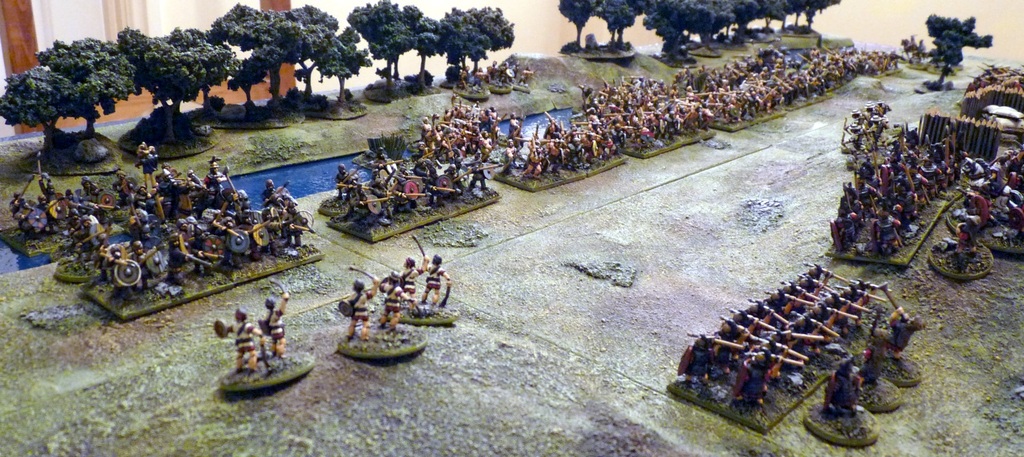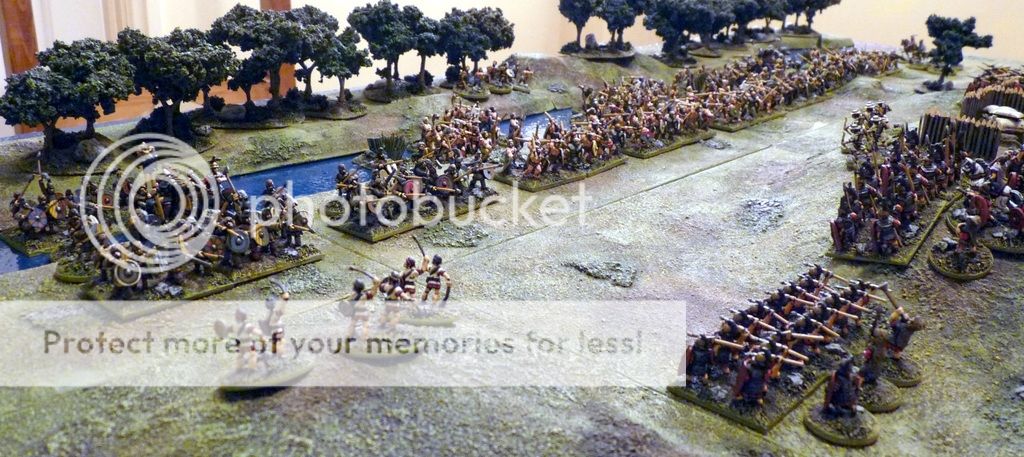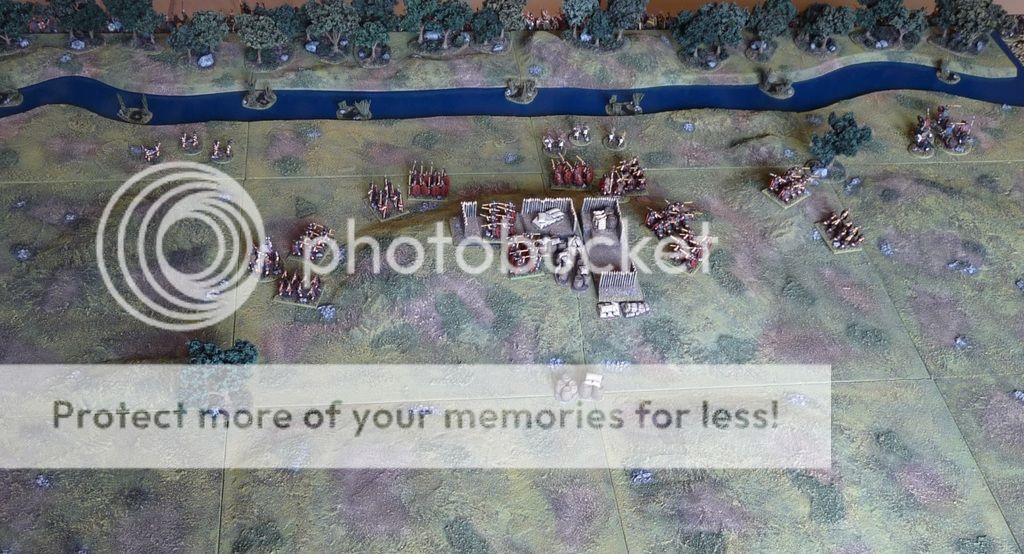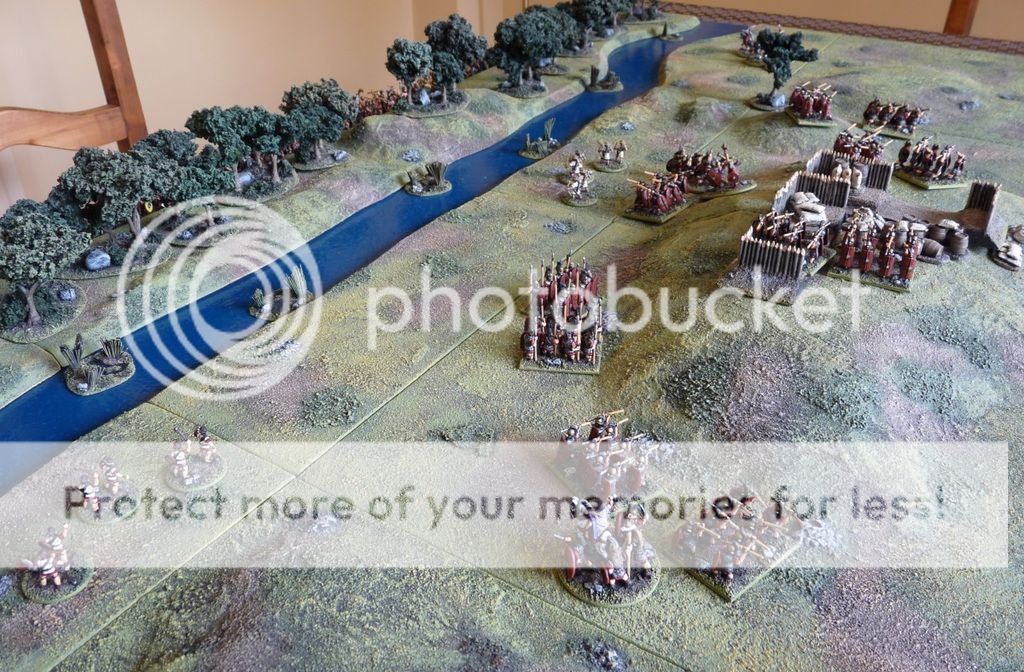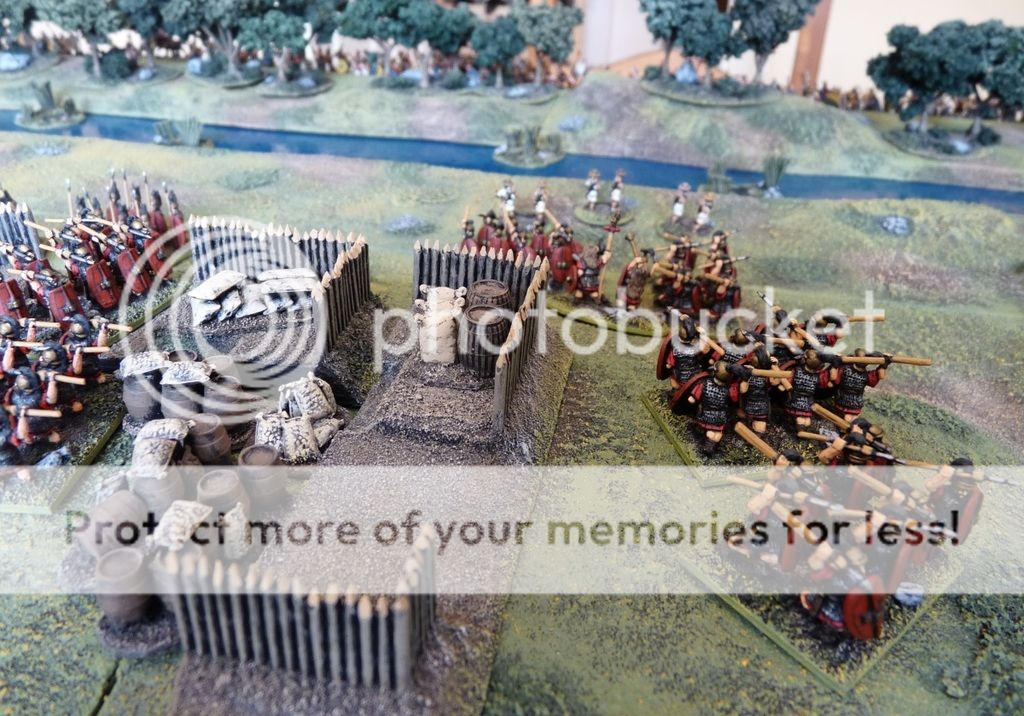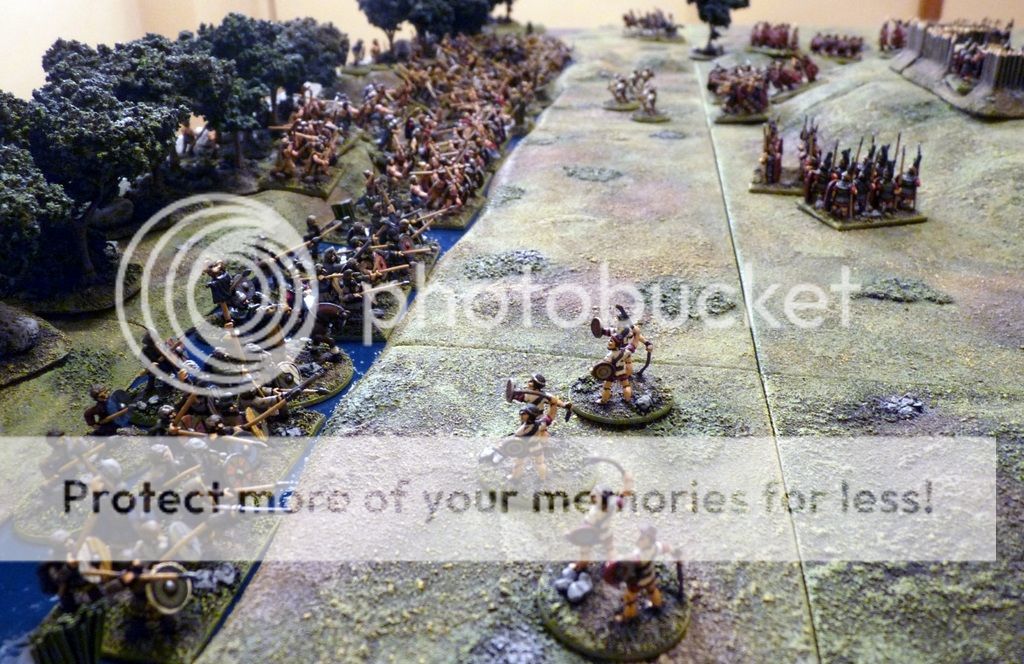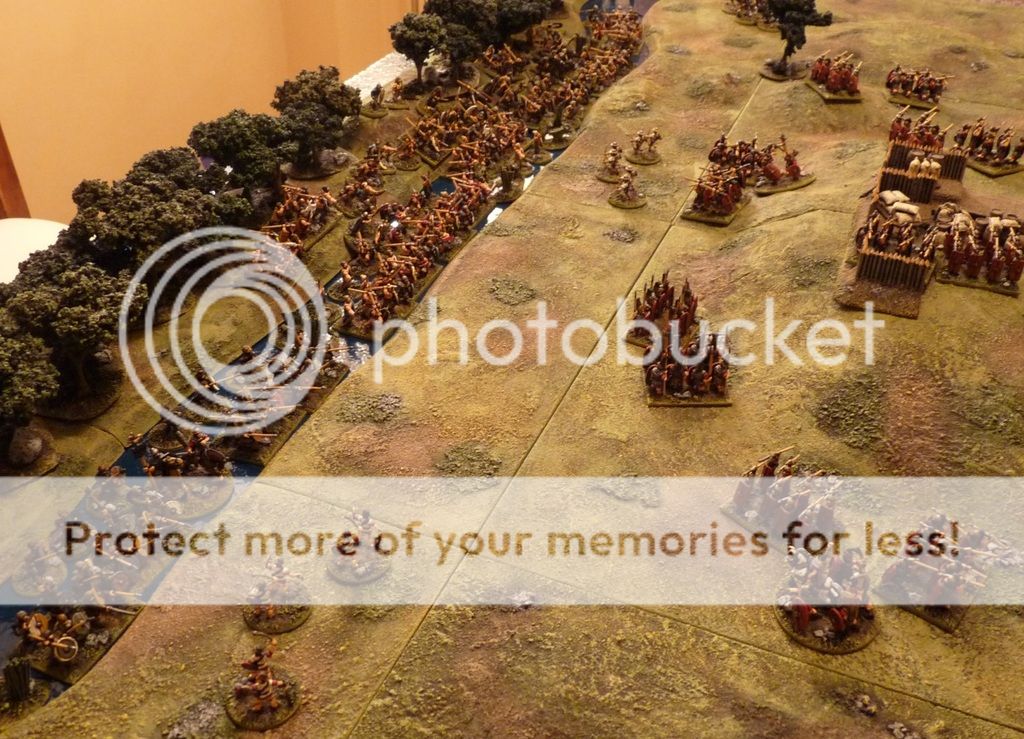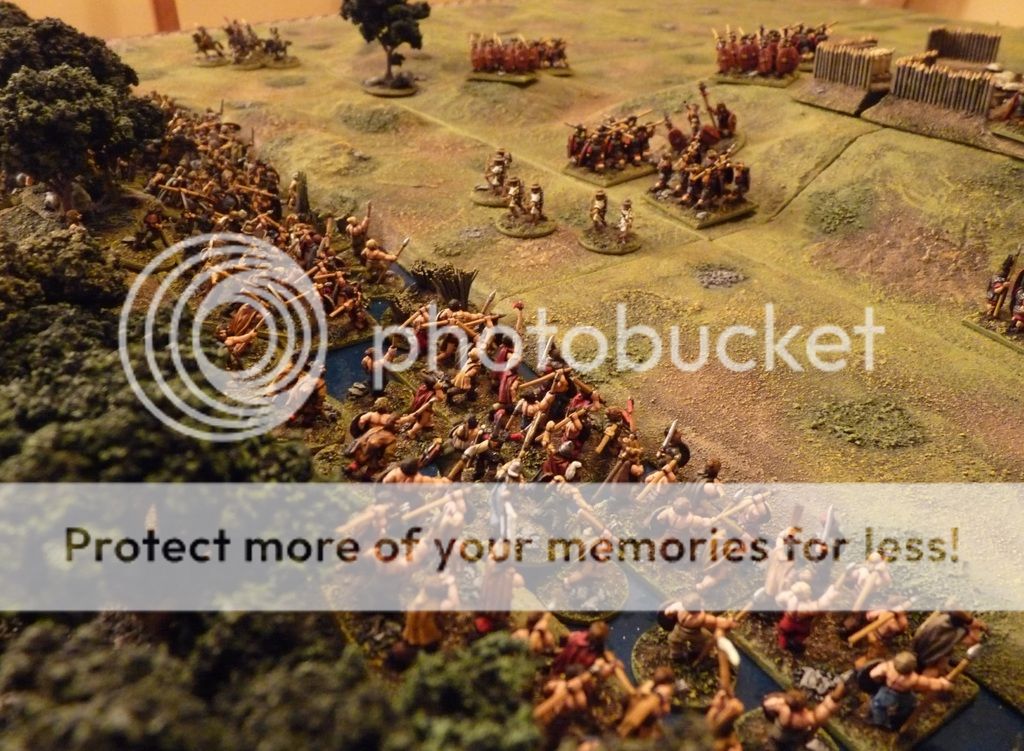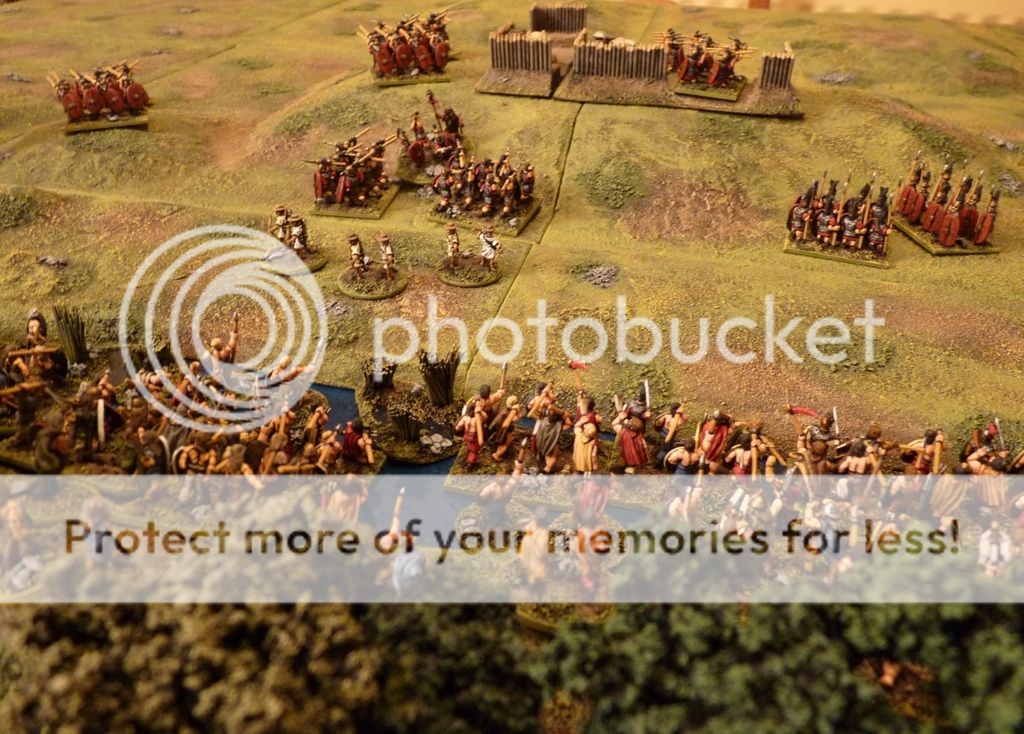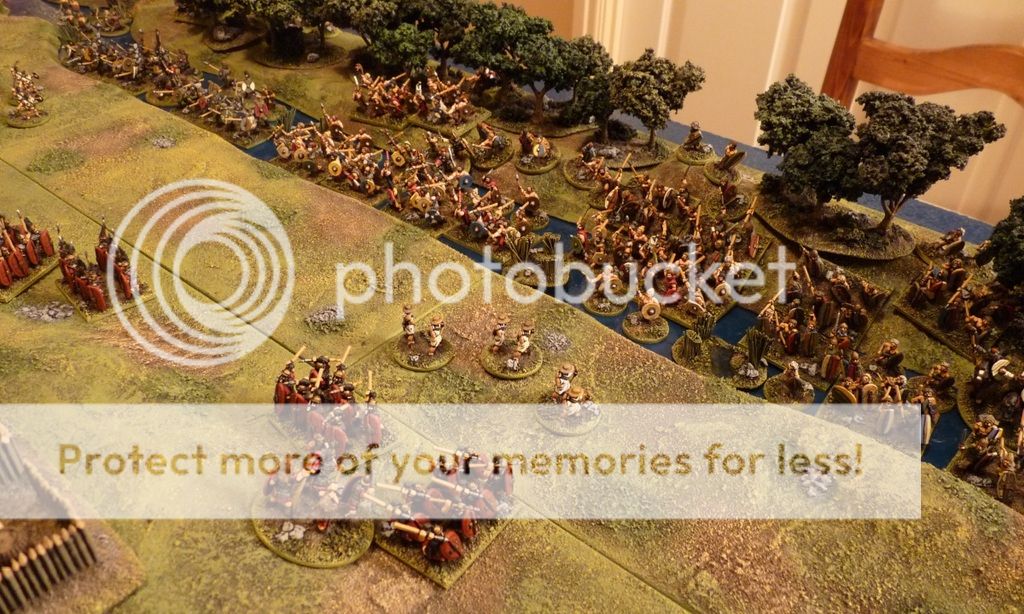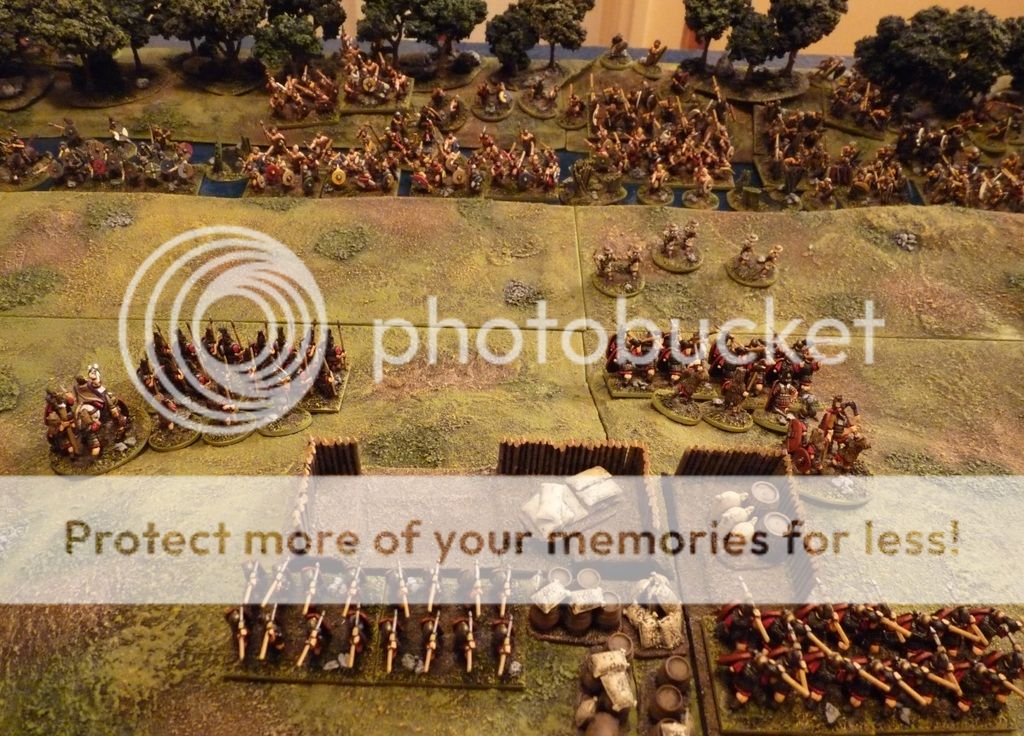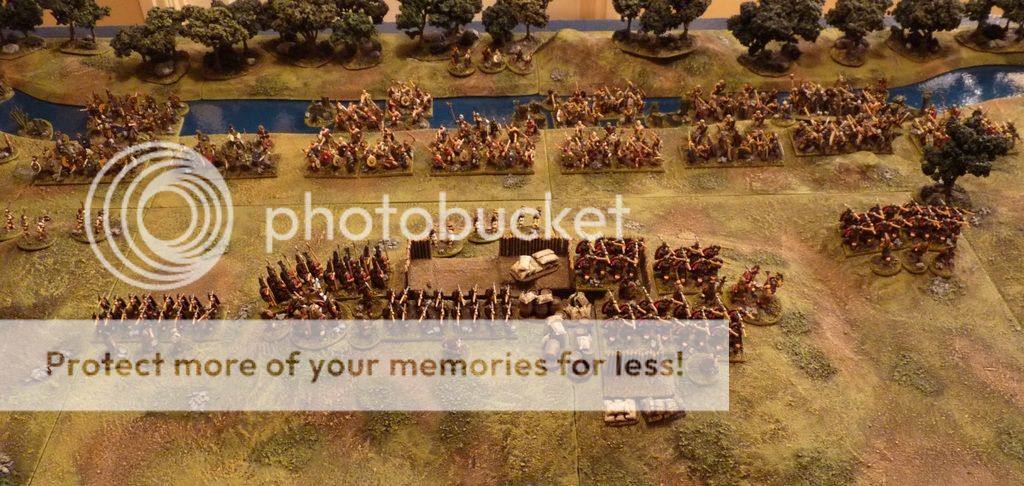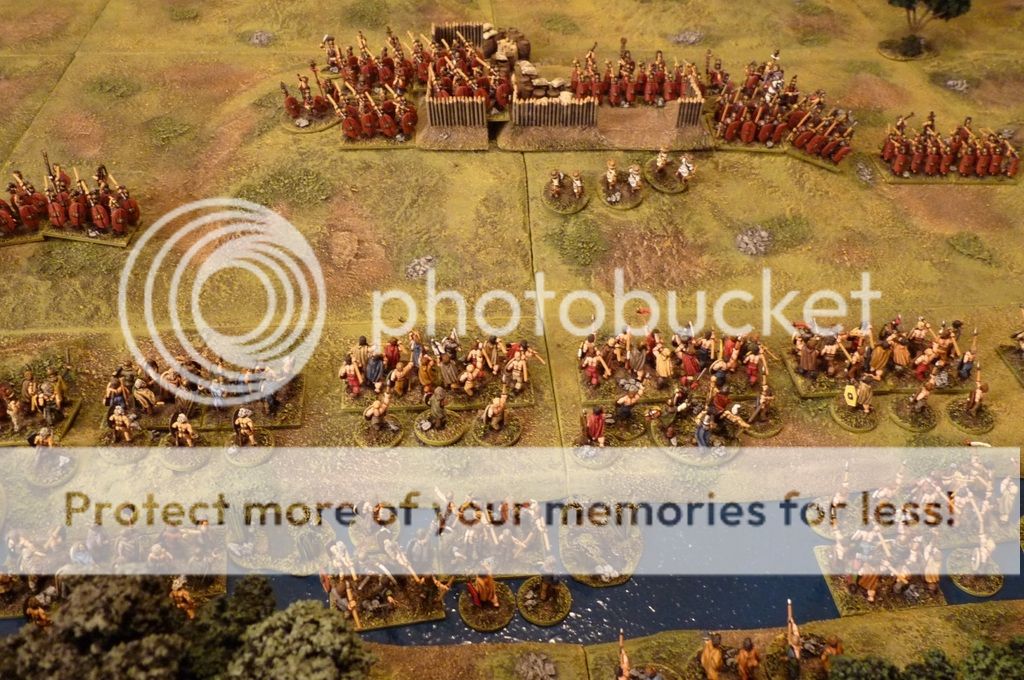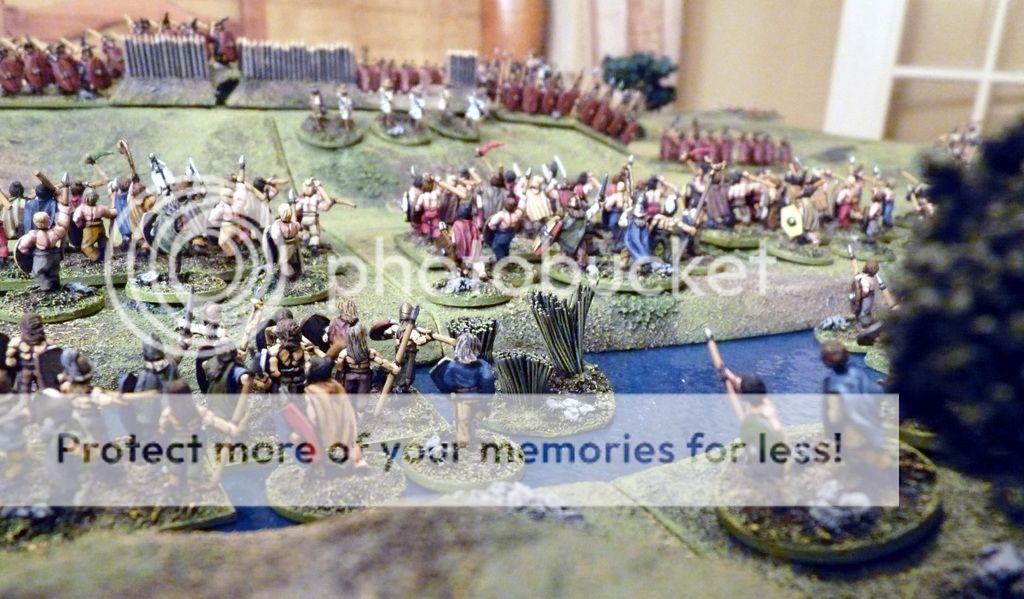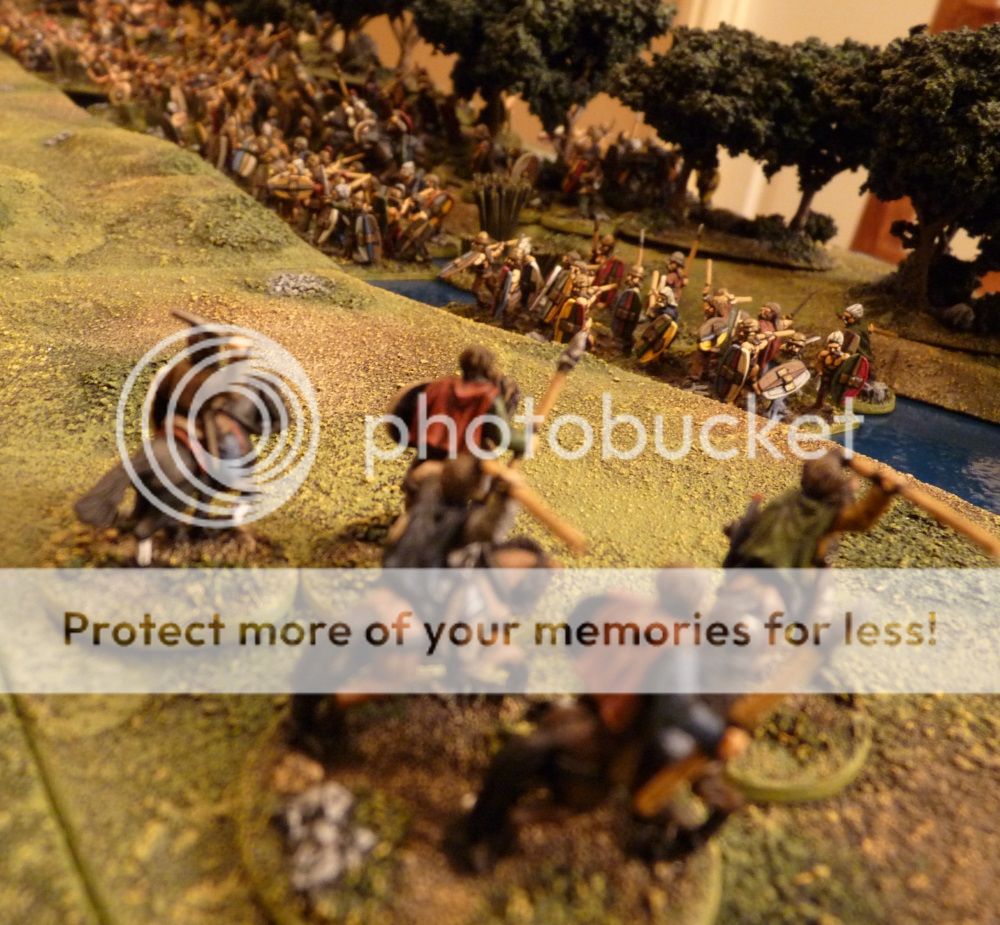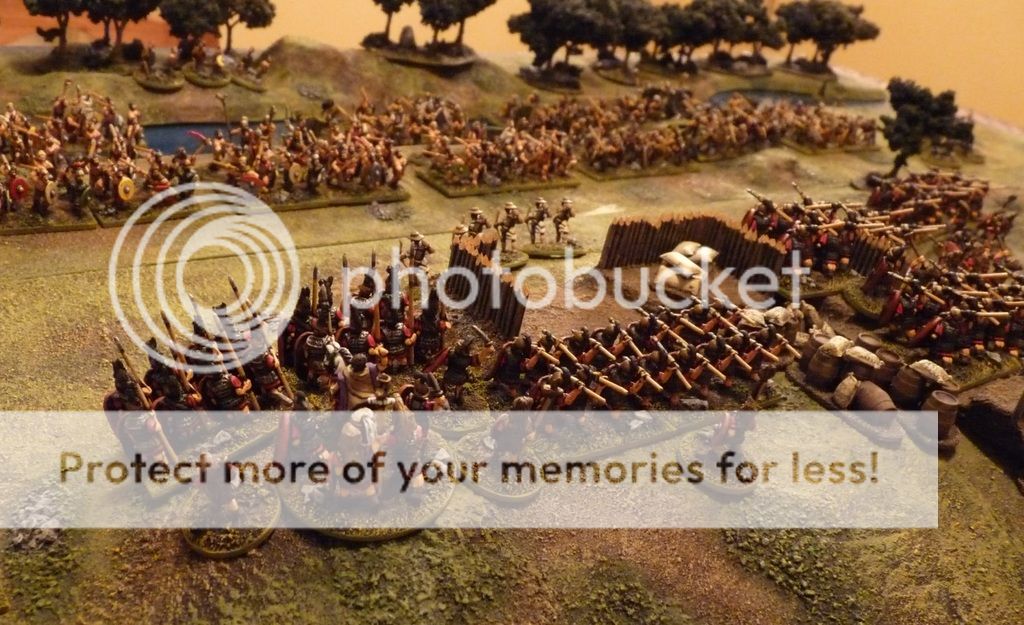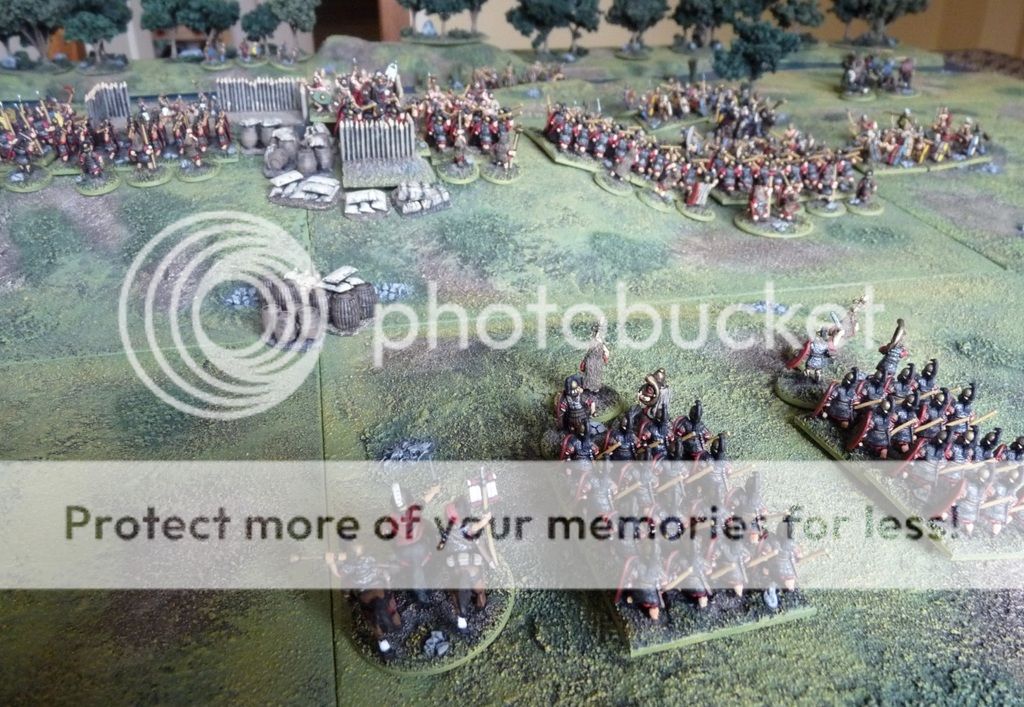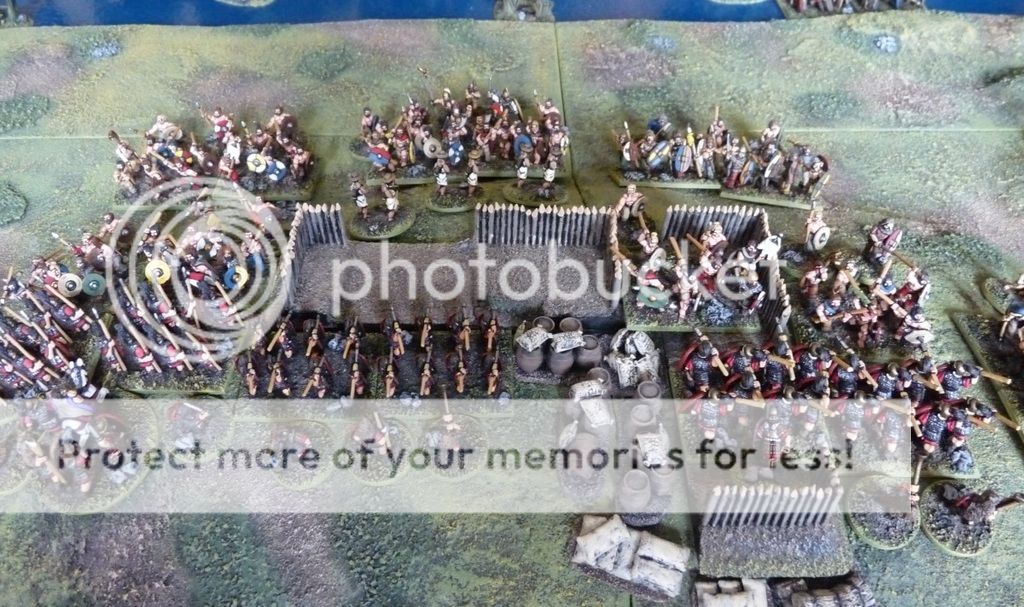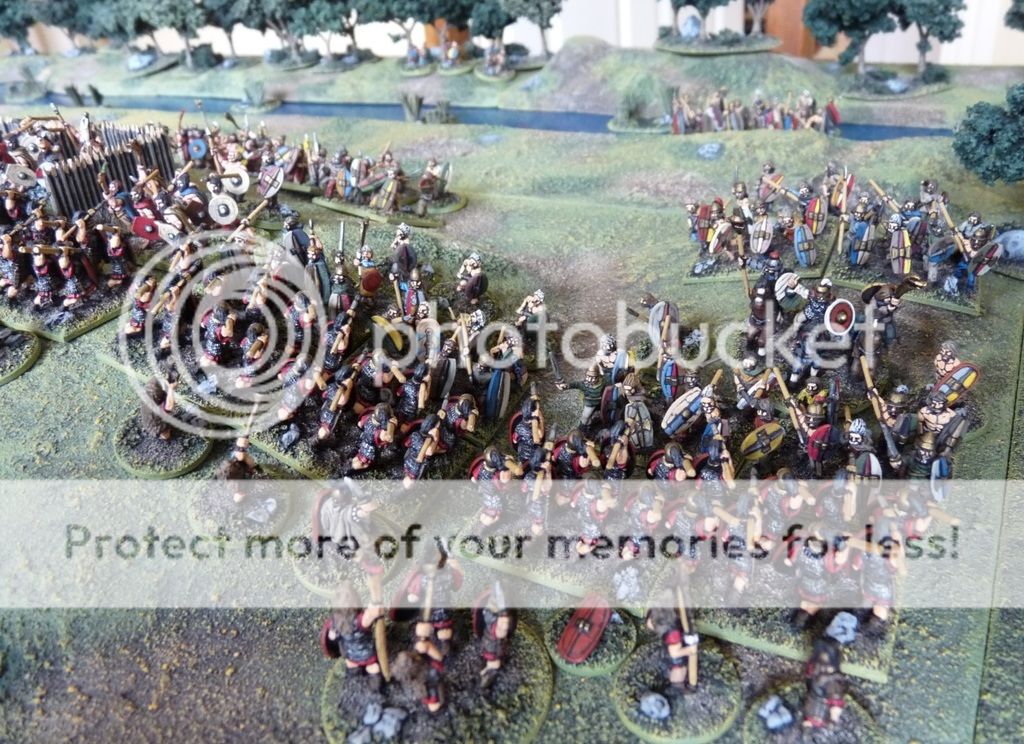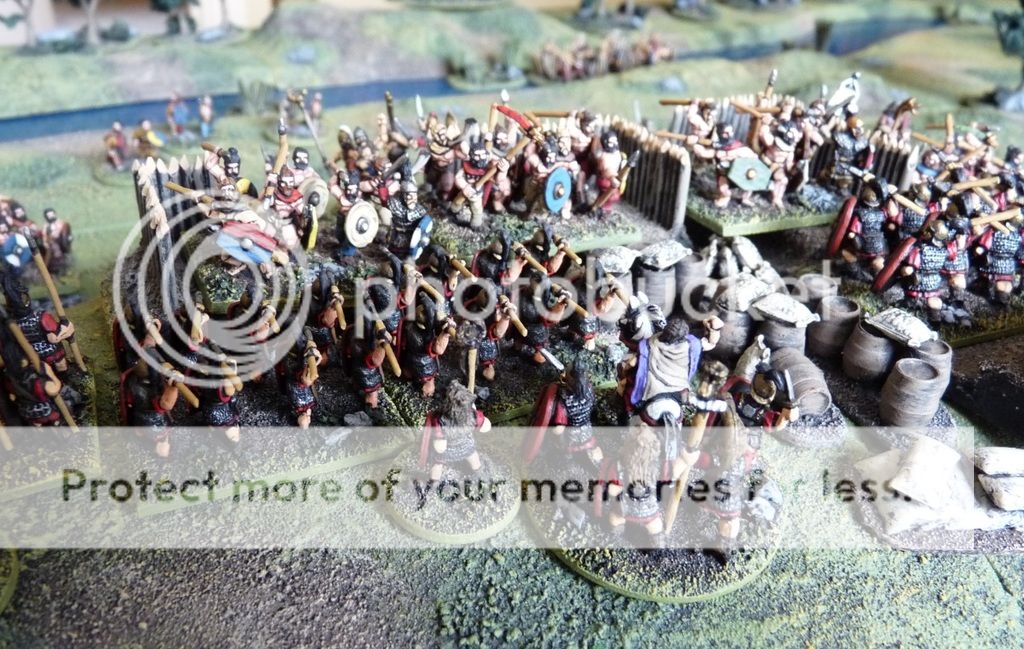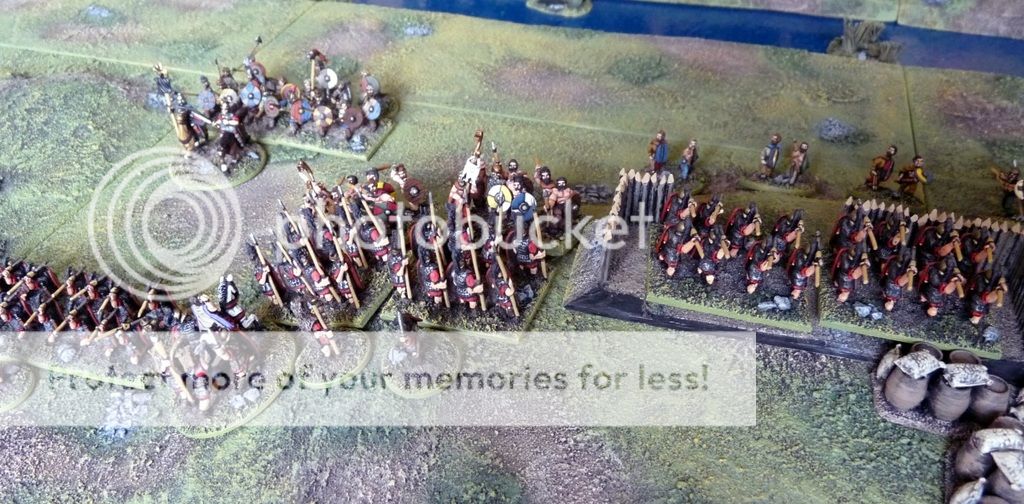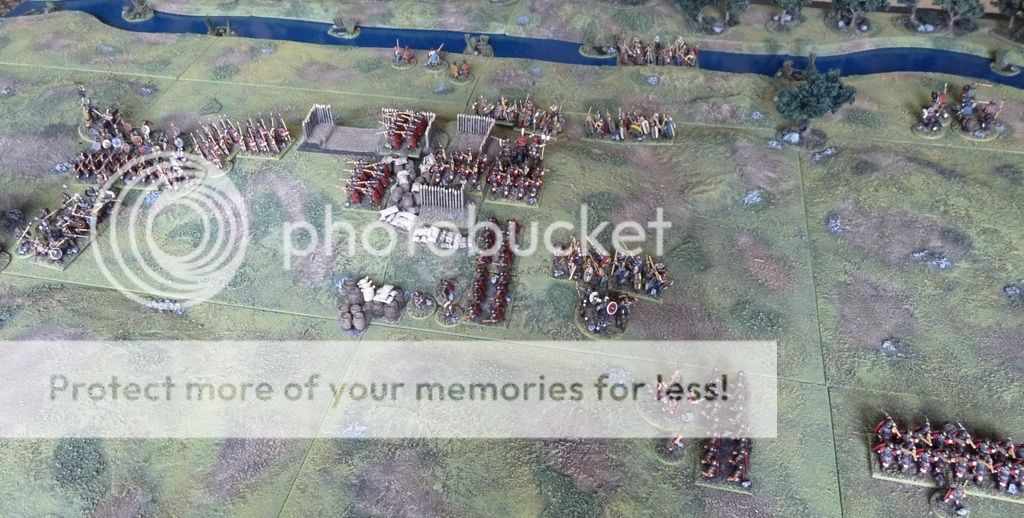At the weekend I thought I’d fit in a solo game of some sort, and after a bit of prevarication over a coffee I decided to dust off some Romans and Gauls and try out a modest re-fight of the Battle of the Sambre. This is something I’ve fancied doing for a long time, since first reading about the battle and the wargame re-fight in Charles Grant (Snr)’s ‘The Ancient Wargame’ – which I must have owned for over 30 years.
The Romans (6 legions of them), commanded by Caesar, have marched up to the river Sambre in northern Gaul/Belgica and are busy working on their overnight fort when they’re surprised by a huge horde of hairy locals intent on mayhem and blood. The Romans have to try to form up and defend themselves while hoping that the remaining 2 legions, who are following with the baggage, arrive in time to help.
I used home-grown rules, written by a friend, to play the game in 15mm on a gridded board. It played as a fairly standard-sized game, to which I added a few scenario-specific rules and of course played around with the initial deployment to reflect the Romans’ state of unreadiness.
So, what happened in my re-fight? I’ll aim to tell the story with more pictures than words..
The Romans in the process of constructing their marching fort. The leaders had to use the majority of their early command ‘pips’ just to reform their troops, leaving little scope for forming up a sensible battle formation – or even a full line.
The tribes burst out of the opposite treeline slope on turn 1 and ploughed into the river. On the left the Nervii made up the largest contingent (which was to give them some command and control challenges), with the smaller Viromandui and Atrebates contingents making up the rest of the coalition army. The river was a minor obstacle, but moving fresh and eager warbands towards an enemy is never that difficult!
Caesar did manage to make some semblance of order out of the chaos before the Gauls hit, but it was tough fighting from the start and isolated VII Legion on the right wing was steadily pushed back, creating a real risk of the whole army being outflanked. The few Roman skirmishers did quite well, causing a delay here and there and buying some time for the heavy troops to form up.
The Roman auxiliary light cavalry had clearly done a very poor scouting job, and although they passed their ‘flee’ test when the enemy charged out of the woods, they contributed nothing to the battle – basically due to the Roman generals being too busy elsewhere to try to get them to do anything. Reasonably historical really.
Caesar posted himself with his best troops, X Legion, on the left, trusting his sub-commander to hold the right flank.
The XIII and XIV Legions were on their way though, and the retreating right wing was clearly where they were most needed – and where they’d be able to make the earliest intervention. The death of the Roman general on this flank was a nasty set-back at a crucial point but the army’s command structure soon organised a replacement and disaster was averted.
Fighting was very fierce over and around the unfinished fortifications in the centre. The Gauls had the best of the initial clashes, but couldn’t quite destroy any of the legions to enable them to break through in the centre. Eventually the Roman fighting discipline told and, although it was touch and go until the end, they held firm and saw off the enemy here.
On the right it continued to be tougher, with the King of the Nervii leading a furious attack which looked likely to win the day.
The late-arriving column comes into play, with VII Legion on the brink of collapse and about to be saved by a timely Roman quick-step unit replacement manoeuvre. After this the Nervii tried to re-group for another attack but the Romans had effectively shored up their line and the right flank was secure.
On the left Caesar got stuck in and helped to keep the lads steady, and fortunately just when the line was about to give way, the King of the Viromandui was struck down atop the ramparts and the rest of his tribe melted away. Although the Atrebates had made progress against the Roman left flank, they were now isolated and decided to follow their allies back across the river.
The end of the battle, with the Romans victorious – although many of their units were on the brink of being destroyed. The Gallic alliance had just fallen short in some key combats, and couldn’t make their greater numbers tell. History had repeated itself, and although Caesar had had a bit of a scare, he knew his invasion of northern Gaul would now proceed more smoothly. He’d just need to give some thought to how he’d write things up for the Senate and the People…
All in all it was an enjoyable game, and it was nice to play a scenario I’d been keen to do for so many years.

